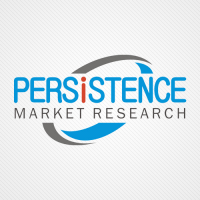Technological Advancements to Propel Natural Food Colors Market Growth
Sales of natural food colors have witnessed sheer proliferation in the recent past in line with the rising consumer preference for natural ingredient-based food products over synthetic variants.

Valley Cottage, NY -- (SBWire) -- 02/26/2019 --Leading Market Players Account for the Bulk of the Market Share
The natural food colors market remains highly consolidated with prominent market players holding a significant share of the market. Leading players operating in the natural colors market continue to invest heavily in research and development while extending their distribution network. The requirement of an extensive product portfolio and a widespread network set high entry barriers into the natural food colors market making it difficult for local and regional players to consolidate their footing in the market.
Some of the prominent players operating in the natural food colors market are Naturex S.A., Archer Daniels Midlands, Sensient Technologies Corporation, Kalsec Inc., Aakash Chemicals and Dyestuffs, Australian Food Ingredient Suppliers (AFIS), Adama Agricultural Solutions Ltd. (LycoRed), GNT International BV (Exberry), McCormick & Company, Dohler GmbH, Chr. Hansen Holding A/S, ROHA Dyechem Pvt. Ltd. (JJT Group), San- Ei Gen F.F.I Inc., DD Williamson, Royal DSM N.V., International Flavors and Fragrances, FMC Corporation, and
Mounting Concerns Regarding the Adverse Impact of Synthetic Colors on Health to Bolster Growth
Food coloring continues to remain in demand in the market as companies continue to attract consumers with attractive food coloring. Multiple surveys suggest that food coloring continues to occupy a vital position in the F&B market as consumers continue to base their judgment on the coloring of food products. Although synthetic colors continue to remain in use, recent researches inspecting the association of various health problems with the consumption of synthetic food coloring have surfaced making consumers question the safety of the ingredients. Studies have suggested the presence of a carcinogen called benzidine in food dyes labeled Yellow 5, Red 40, and Yellow 6 which find usage in over 85% of the food industry. Though approved by the US Food and Drug Administration, the release of such studies are influencing a consumer shift towards products using natural food coloring. Other researches have linked prolonged consumption of synthetic food colors with ADHD, allergies, hyperactivity in children, and deterioration of the human immune system. This is causing food and beverage manufacturers to gradually shift to using natural food colors in their products.
Request for sample report: https://www.persistencemarketresearch.com/samples/27616
"Mindful Choices" and "Clean Label" Trends to Continue Driving Market Proliferation
The "Mindful Choices" trend continues to gain traction with consumers becoming increasingly attentive of what they eat and drink. The "clean label" trend a subset of the pervasive "mindful choices" trend is encouraging people to study what they consume. An increasing percentage of the global population continues to concentrate on improving their health and well-being driving the growing popularity of the trends. In addition to this, a comprehensive growth in the number of government initiatives promoting health and well-being is estimated to bolster the natural food colors market. A rise in the average disposable income of the global population is estimated to fuel the demand for food products manufactured using natural ingredients. A growing emphasis on promoting sustainability in all the industries is further expected to aid in the growth of the market.
Technological Advancements to Propel Natural Food Colors Market Growth
The instability of natural food colors and low-shelf life restrain the growth of the market. However, continuous innovation and technological advancements in the food processing industry are expected to boost market growth. Ongoing researches continue to focus on finding new sources for natural food colors and development of techniques to substantially improve the shelf-life and stability of natural colors. For instance, a new study aiming towards the development of novel techniques for using the plant genipap as a source for blue color was released alluding to the growing demand for natural blue color in the market. Another research focusing on improving the shelf-life and stability of colors to prevent fading during processing is underway. The development of novel techniques to achieve desired qualities in natural food colors is estimated to augment to the growing natural food colors market.
Request Report TOC @ https://www.persistencemarketresearch.com/methodology/27616
APEJ to Present Lucrative Opportunities for Natural Food Color Manufacturers
The natural food colors market is estimated to bolster in the Asia Pacific Excluding Japan region which is estimated to emerge as the largest market for natural food colors manufacturers. The significant growth can be attributed to the intensifying support provided by the governments in the region. Demand for natural food colors is estimated to burgeon in India and China owing to the launch of new products and the flourishing economies in the country.
Media Relations Contact
Abhishek Budholiya
Marketing Head
Persistence Market Research
1-347-918-3531
https://www.persistencemarketresearch.com/market-research/natural-food-colors-market.asp
View this press release online at: http://rwire.com/1156975